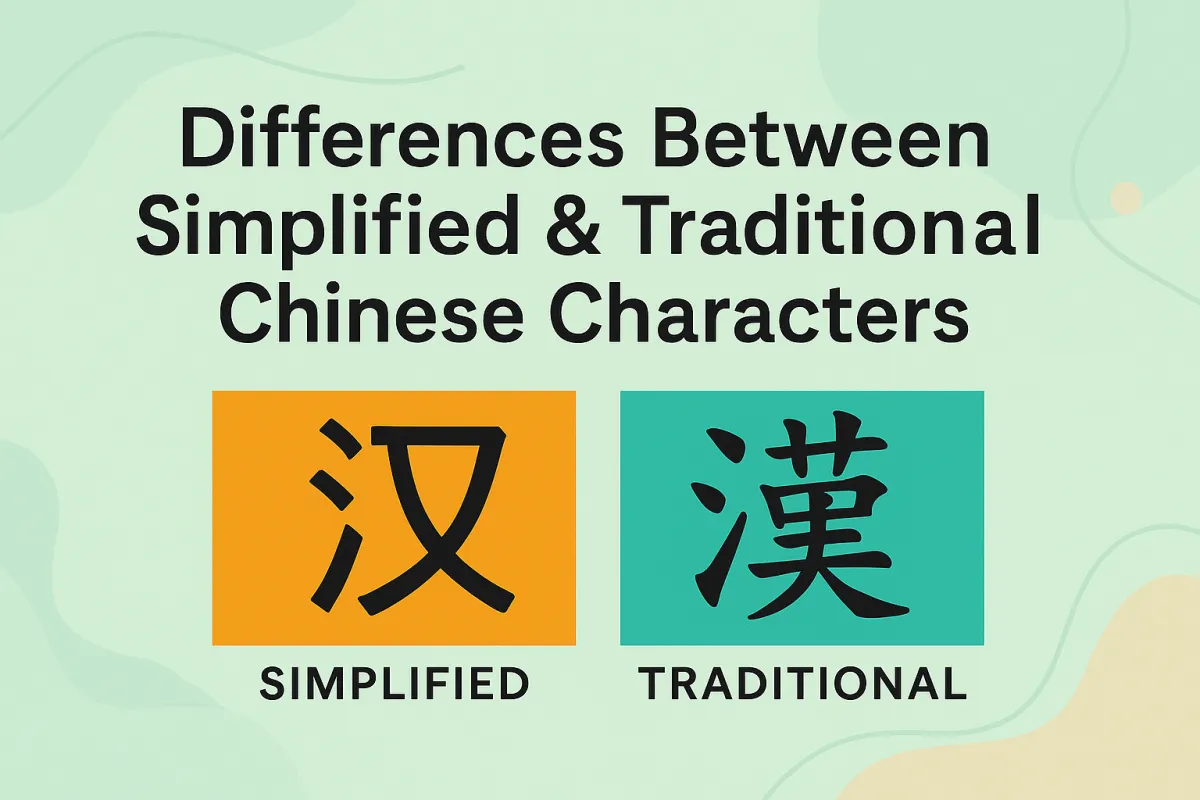
Differences Between Simplified & Traditional Chinese Characters

Simplified vs. Traditional Chinese: What’s the Difference?
Simplified Chinese and Traditional Chinese are two written forms of the Chinese language, both based on the same character system known as Hanzi. While they share common roots, there are key differences in how they are written, where they are used, and how they influence learning and communication.
Where Are They Used?
The primary difference lies in geography.
Simplified Chinese is used in mainland China, Singapore, and other countries with Chinese population.
Traditional Chinese is used in Taiwan, Hong Kong, and Macau.
So, depending on where you are or whom you're communicating with, the written form of Chinese will differ.
Character Structure and Stroke Count
Simplified Chinese, as the name suggests, features characters that have been simplified—mainly by reducing the number of strokes. This reform was introduced in the 1950s and 60s by the Chinese government to improve literacy rates.
Traditional Chinese, on the other hand, preserves the original structure and complexity of the characters, often containing more strokes and intricate details. For example:
Number of Characters and Vocabulary Differences
While the majority of characters exist in both forms, there are some differences in vocabulary and character usage. Simplified Chinese sometimes merges several Traditional characters into one, which can make reading and writing faster—but occasionally at the cost of nuance or etymological clarity.
This means that learners of Traditional Chinese often get a deeper understanding of the character origins, while learners of Simplified Chinese may find it easier and more efficient to master the writing.
Which One Should You Learn?
That depends on your goals:
If you're planning to live, work, or do business in mainland China or Singapore, learning Simplified Chinese is practical.
If your focus is Taiwan, Hong Kong, or cultural heritage, then Traditional Chinese is more relevant.
Fortunately, if you learn one system, it's not too difficult to adapt to the other later, since the spoken language remains largely the same (especially in Mandarin-speaking regions).
In Summary
Simplified and Traditional Chinese are two forms of the same language, each with its own history, purpose, and beauty. Simplified Chinese offers efficiency and is widely used in modern contexts. Traditional Chinese preserves the depth and artistry of ancient writing. Understanding both not only expands your communication skills but also gives you a richer appreciation of Chinese culture.
